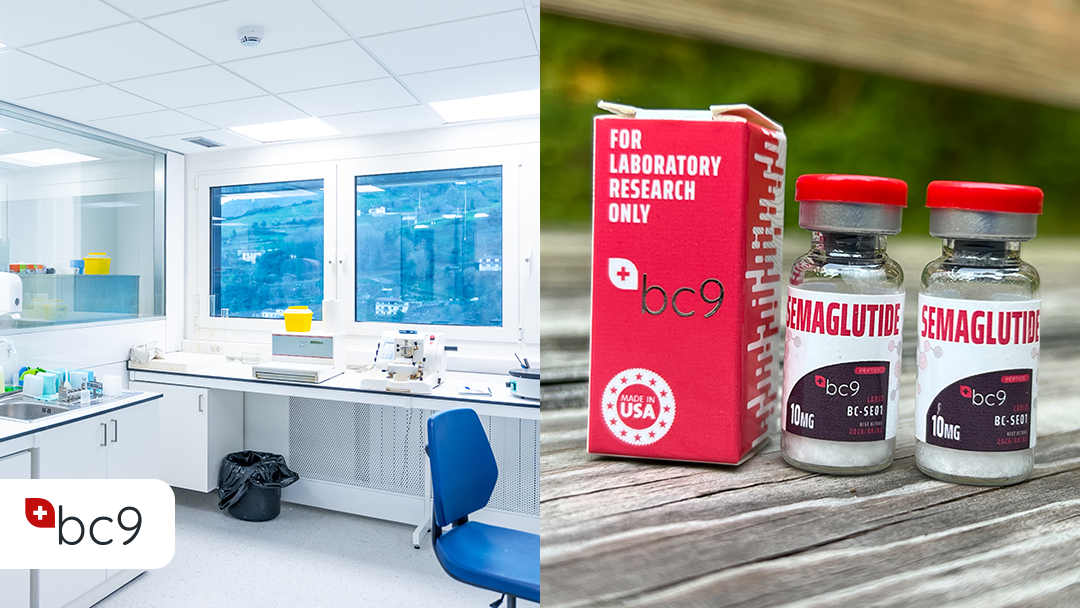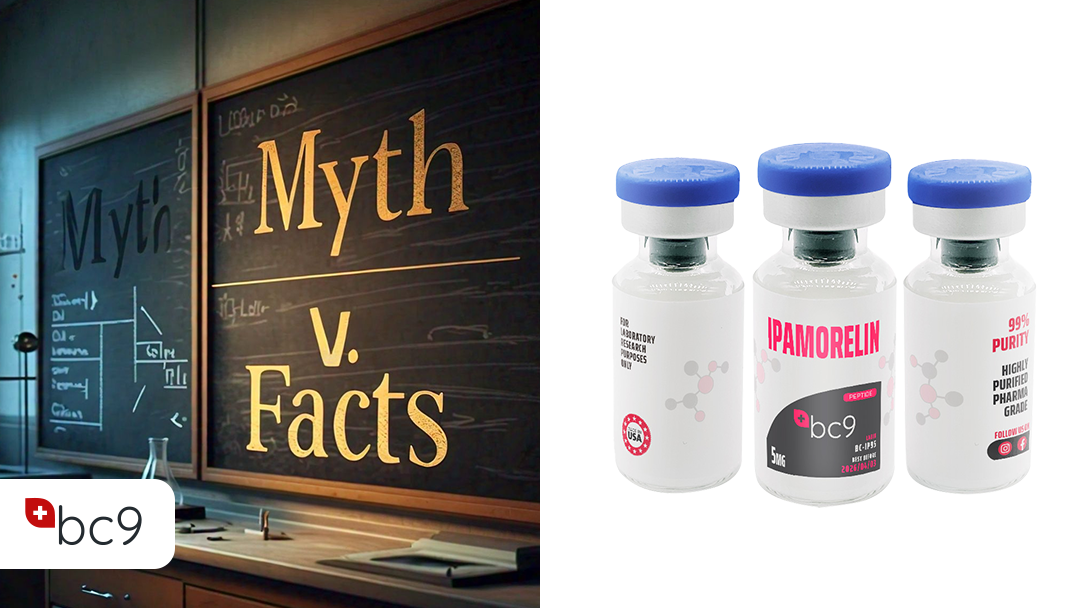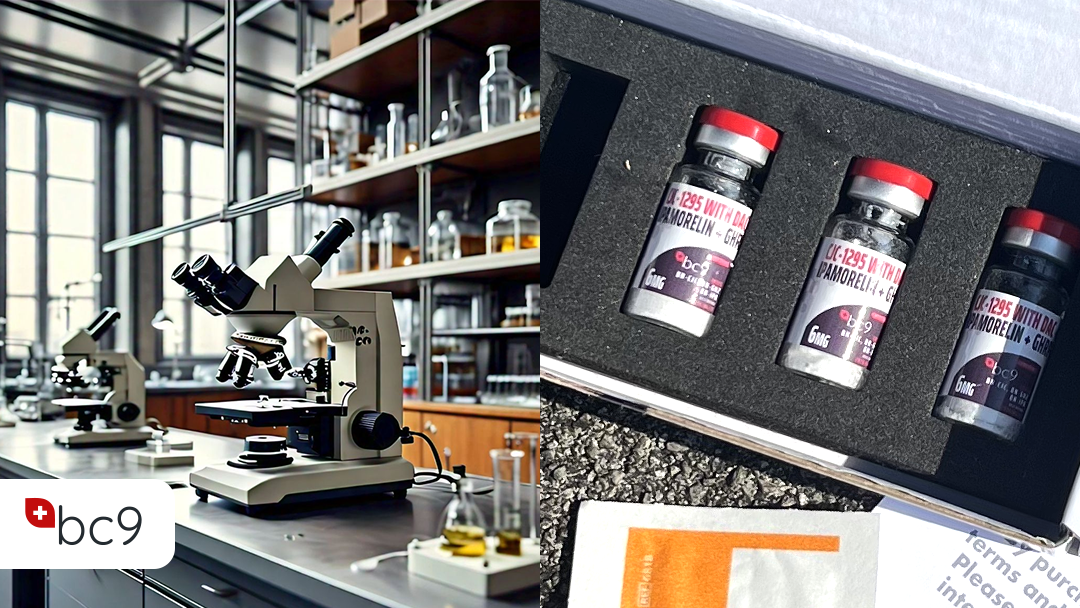
The Difference Between GHRP-2 and GHRP-6 Peptides
Growth hormone-releasing peptides (GHRPs) have been a subject of debate for many years. Researchers investigate these compounds as a potential aid for growth hormone deficiency. Growth hormone-releasing peptides (GHRPs) potentially trigger the release of growth hormone. This is believed to result from the pituitary gland. The 2 most popular and studied growth hormone-releasing peptides (GHRPs) are GHRP-2 and GHRP-6. Research suggests that they may be highly effective in their action. This includes potentially elevating plasma levels of the growth hormone (GH). Although both peptides are similar, they differ in their pharmacodynamics and pharmacokinetics. In this article, we will dig into everything you should know about GHRP-2 and GHRP-6 to elevate your research to the next level. What is GHRP-2 and GHRP-6? What is GHRP-2? As mentioned above, GHRP-2 involves potential implications for growth hormone deficiency. Studies show its potential to combine with a growth hormone receptor, making it a synthetic agonist of ghrelin. This may cause a potential physiological response. In the case of GHRP-2, it has the potential to promote growth hormone secretion, making it a novel growth hormone secretagogue. [R] GHRP-2 has been extensively studied for its ability to aid in growth hormone secretion, as well as appetite and food consumption. This is believed to be as a result of its potential ability to bind to growth hormone secretagogue receptors. What is GHRP-6? Growth hormone-releasing peptide-6 is a synthetic hexapeptide. It has the potential to stimulate the secretion of GH. Just like GHRP-2, GHRP-6 is a ghrelin receptor agonist. Ghrelin is a hormone that regulates appetite. It also protects cardiovascular health and stimulates GH secretion from the pituitary gland. [R] GHRP-6 is unique as it was the first-ever synthetic peptide that elicited a dose-related release in GH in vivo and in vitro. [R] How Does GHRP-2 and GHRP-6 Work? How Does GHRP-2 Work? As mentioned above, GHRP-2 is believed to influence growth performance since it is a ghrelin agonist. Ghrelin stimulates the growth hormone secretagogue receptor (GHS-R). It was discovered in the pituitary gland using synthetic GHSs. This includes growth hormone-releasing peptides (GHRPs) and non-peptide compounds. As mentioned above, GHRP-2 has the potential to stimulate the production of growth hormones. Uniquely there is no interruption in natural growth hormone production. This is unlike synthetic HGH administration. GHRP-2 stimulates growth hormone secretion in a way that mimics the body’s natural release patterns. Rather than causing a constant increase, it helps maintain balanced hormone levels. This potentially avoids many of the negative side effects associated with synthetic HGH. Such as the cessation of natural growth hormone production. How Does GHRP-6 Work? GHRP-6 acts specifically on pituitary somatotrophs to stimulate GH release. This action of GHRP-6 seems to be mediated via the activation of phospholipase C and phosphoinositide breakdown. This together with increased calcium (Ca2+) influx through voltage-dependent calcium channels. [R] Simply put, GHRP-6 works by activating certain processes in cells. This then leads to an increase in calcium levels, which helps trigger the release of the hormone. The peptide’s action isn’t limited to eliciting GH release, though. Recent evidence indicates that GHRP-6 may also stimulate the secretion of adrenocorticotrophic (ACTH). Additionally, it may also stimulate the release of prolactin hormones. This effect is generally attributed to the abovementioned central action of this peptide. [R] Explore additional details at BC9.org. Benefits Of GHRP-2 Benefits Of GHRP-6 Key Differences in The Growth Hormone The major differences between GHRP-2 and GHRP-6 are strength and potency. GHRP-2 slightly stronger and may release more Growth Hormone compared to GHRP-6. However, the importance of the latter in stimulating appetite cannot be ignored altogether. Though GHRP-2 is being investigated for the same purpose, it is certainly not producing the same results as GHRP-6. GHRP-6 is believed to potentially increase hunger in subjects substantially as opposed to GHRP-2. Another key difference is the actual half-life of the compounds. In research settings, it was found that GHRP-2 has a much shorter half-life. Research also shows that GHRP-2 may have the potential to improve the levels of calcium. This can in turn facilitate the secretion of other additional growth hormones. This may make GHRP-2 a more potent compound. Though there are a lot of similarities between the two peptides, there is no denying the fact that they also have vast differences. Besides having differences in the release of growth hormones and stimulation of pituitary glands. GHRP-2 may have better control in the release of prolactin and Cortisol. Conclusion Although GHRP-6 and GHRP-2 have some structural differences, they seem to have similar effects on animal test subjects. They both act on the pituitary gland to release growth hormone. The main difference is the amount of growth hormone released by both hexapeptides.






